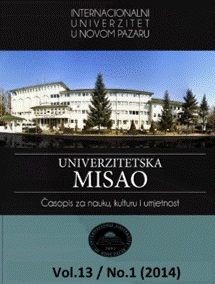KOMBINOVANI OBLICI PRILAGOĐAVANJA TRAŽNJI U ISTOJ ZONI ZAPOSLENOSTI
COMBINED FORMS OF ADJUSTING TO DEMAND IN THE SAME ZONE OF EMPLOYMENT
Author(s): Mehmed MetaSubject(s): Business Economy / Management, Micro-Economics, Methodology and research technology, Accounting - Business Administration, Human Resources in Economy
Published by: Интернационални Универзитет у Новом Пазару
Keywords: Alternative decision-making; combined models of adaptation; costs dynamics; used and unused costs; profit;
Summary/Abstract: Production costs are one of the basic elements of company’s business success. In their quest to reduce operating costs to objectively conditioned level, the companies’ production management undertakes different organizational and business operations both in production and in other segments of their business. Qualitative and quantitative adapting to changes within the existing and the potential demands represents a huge task for the company management. To the variations (increase or decrease) in demand for the output which is produced, companies may adapt in different manners. Within the framework of the installed capacity, if the demand increases this can be done by increasing the number of operating machines and increased use of variable inputs of the activated machines, which until then had been kept in reserve, demand (quantitative adjustment model within the same area of employment), increased intensity of the use of existing capacity (intensive adjustment) or by introduction of overtime or multi-shift work (time-adjustment model). Without diminishing the theoretical and practical importance of application of these models’ production adaptation (intensive, temporal and quantitative forms of adjustment in the same employment area) of enterprises in their pure form, in this paper we will emphasise the cost and profit implications of the combined use of quantitative models of production adaptation within the same employment zone and intensive forms of adaptation. This means that in the event of a decrease in demand, enterprises in certain parts of their capacity will quantitatively adapt and exclude the machines kept in reserve, and in other parts of their capacity will apply intensive form of adaptation.
Journal: Univerzitetska misao
- Issue Year: 2014
- Issue No: 13 (1)
- Page Range: 5-19
- Page Count: 15
- Language: Serbian

